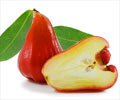- Chaudhuri ratan k. (2004) pcia conference, guangzhou, china
- Chen TS et al. Efficacy of epigallocatechin-3-gallate and amla (emblica officinalis) extract for the treatment of diabetic-uremic patients. med food. 2011 jul-aug; 14(7-8):718-23
- Nampoothiri SV et al. In vitro antioxidant and inhibitory potential of terminalia bellerica and emblica officinalis fruits against LDL oxidation and key enzymes linked to type 2 diabetes. Food chem toxicol. 2011 jan; 49(1):125-31.
- Akhtar MS et al. Effect of amla fruit (emblica officinalis gaertn.) on blood glucose and lipid profile of normal subjects and type 2 diabetic patients. Int j food sci nutr. 2011 sep; 62(6):609-16.
- Sampath kumar kp et al. Recent trends in potential traditional Indian herbs - Emblica officinalis and its medicinal importance. Journal of pharmacognosy and phytochemistry, vol. 1 no. 1 2012
- Sabu MC ; Kuttan R. Anti-diabetic activity of medicinal plants and its relationship with their antioxidant property. J ethnopharmacol. 2002 jul; 81(2):155-60.
- Shukla v et al. Evaluation of antioxidant profile and activity of amalaki (emblica officinalis), spirulina and wheat grass. Indian journal of clinical biochemistry, 2009 / 24 (1) 70-75
- Santhosh J et al. Hypolipidemic activity of phyllanthus emblica linn (amla) & trigonella foenum graecum (fenugreek) combination in hypercholesterolemic subjects – A Prospective, randomised, parallel, open-label, positive controlled study. Asian journal of biochemical and pharmaceutical research issue 1 (vol. 2) feb 2012
- Baliga MS ; Dsouza JJ. Amla(emblica officinalis gaertn), a wonder berry in the treatment and prevention of cancer.eur j cancer prev. 2011 may;20(3):225-39.
- Gopa. B et al. A comparative clinical study of hypolipidemic efficacy of Amla (Emblica officinalis) with 3-hydroxy-3-methylglutaryl-coenzyme-A reductase inhibitor simvastatin. Indian J Pharmacol. 2012 Mar-Apr; 44(2): 238–242.
About
Indian Gooseberry or Amla (Emblica officinalis) also called as Amalaki or Dhatriphala in Sanskrit is one of the most valuable fruits discovered till date by mankind.
Abundantly growing in India, the tree is found in deciduous forests across the Indian subcontinent. It is the most commonly used ingredient of most Ayurvedic preparations in some form or the other.

Chyawanprash a thick mix of ayurvedic formulations constitutes 70% of amla and is the most reliable and effective immune enhancer and health tonic for both children and elderly. The health benefits of Amla are playing a preventive role in each and every health ailment or disorder. It promotes iron absorption and hence can combat anemia. It is helpful in curing skin problems, hair problems, acidity, diabetes, asthma, cholesterol and is a natural immune booster.

Since amla pacifies all the three doshas - vata, pitta and kapha - it has a wide range of corrective and curative effects on the human body, according to the science of ayurveda. In the ancient literature it is rightly called as “sarvadosha hara - a remover of all diseases”. The National Medicinal Plants Board is also conducting a national campaign to promote this valuable herb in the country.
Amla stands out as it is the richest source of the antioxidant vitamin C. Every 100 gm of fresh amla provides nearly 700 mg of this vitamin which is 20 times higher than what is found in an orange. Amla when tested recently for its chemical composition was seen to contain 470 - 680 mg of vitamin C per 100 grams fresh fruit. The vitamin value increased further when juiced. The dry and dehydrated berry was seen to contain 2428-3470 mg of vitamin C per 100 g.
Amla contains low molecular weight hydrolyzable tannins namely Emblicanin A and Emblicanin B (Gallic acid or Ellagic acid structures attached to vitamin C) along with pedunculagin and punigluconin. The fruit, leaves and bark are rich in them.
Vitamin C present in Amla is present in a complex form and not as free vitamin C. Emblicanins, the active ingredient of Amla are attached to the vitamin. It has been proposed that the superior effect of the fruit in disease prevention is actually due to the more stable and potent “anti-oxidant effect of tannins or emblicanins” present in the fruit rather than just vitamin C.
The fresh fruit contains more than 80 percent water. The nutrient content includes calcium, phosphorus, iron, carotene, vitamin B complex and fiber. Even if dried in shade, amla retains most of its vitamin C.
Amla is reported to possess hepatoprotective, cardioprotective, diuretic, laxative, stomachic, restorative, antipyretic, anti-inflammatory properties. It is a hair tonic, and a natural digestive medicine. It has its uses in treating ophthalmic problems, dyspepsia, gastritis, hyperacidity, constipation, colitis, hemorrhoids, hematuria, anemia, diabetes, cough, asthma, osteoporosis, premature graying of hair, weakness and fatigue.











